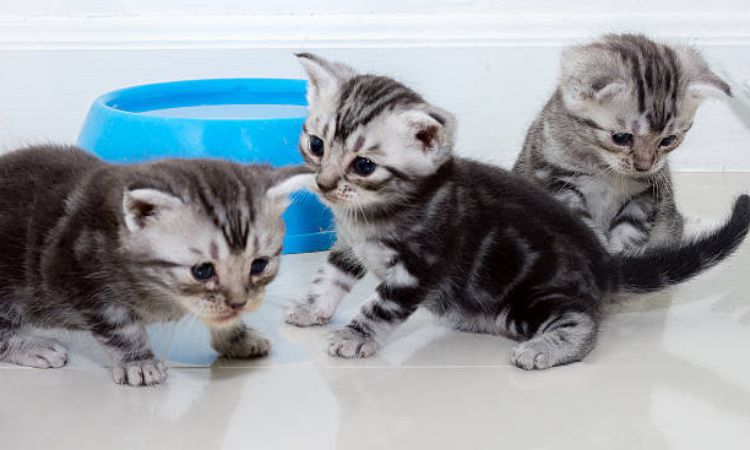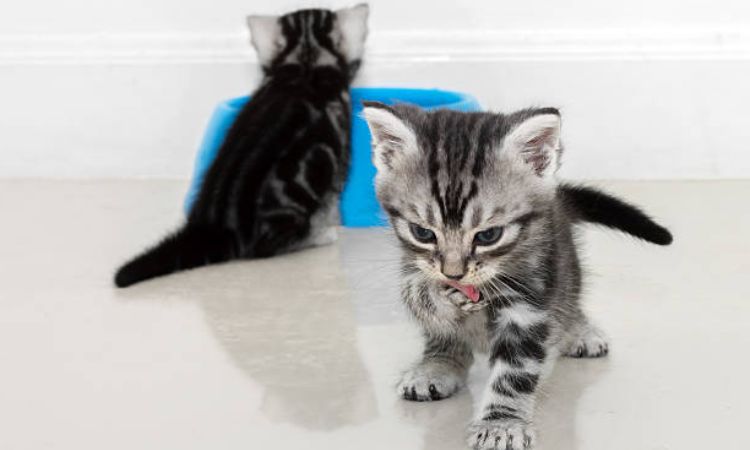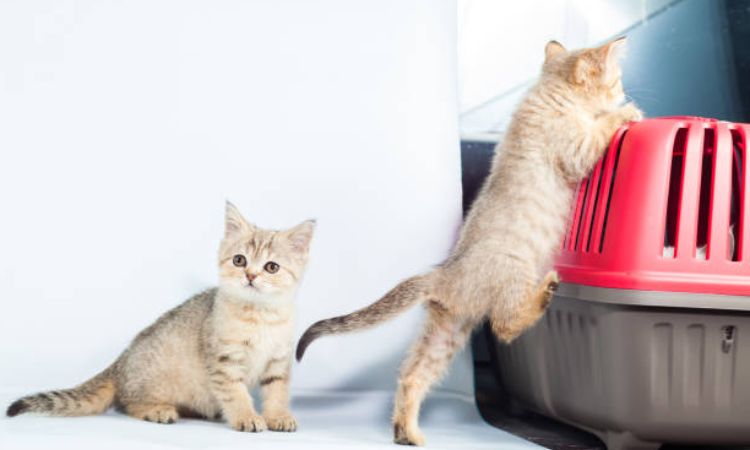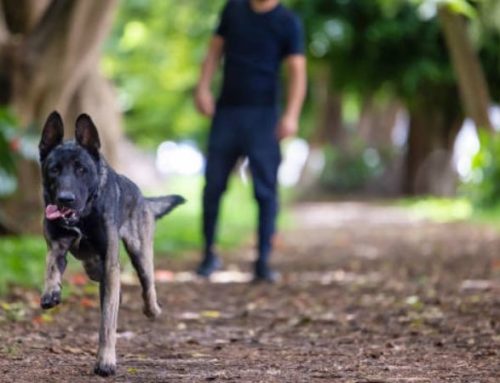Bringing a tiny kitten into your home is a bundle of joy—but it also comes with its fair share of surprises, including the messy business of potty training. From their very first days, kittens rely on their mother—or a caring human—to help them go.
Understanding when they’ll start peeing and pooping on their own, and how to guide them toward using a litter box, can make the process smoother for both you and your furry friend. In this guide, Nexus-Pets walks you through what to expect and how to set your kitten up for success.

Kitten Development and Toilet Habits
When Kittens Start Peeing and Pooping Independently
Newborn kittens are unable to urinate or defecate on their own. During the first three weeks of life, they rely entirely on their mother—or a human caregiver if orphaned—to stimulate elimination. Typically, kittens begin to pee and poop independently around 3–4 weeks of age. At this stage, their digestive and urinary systems are sufficiently developed, and they can start controlling bowel and bladder movements without external assistance.
How Mother Cats Stimulate Elimination in Newborns
Mother cats naturally stimulate their kittens’ elimination through a process called “toileting.” She does this by licking the kitten’s lower belly, genital, and anal areas after each feeding. This gentle stimulation triggers the nerves responsible for urination and defecation and helps the kitten learn how to use their muscles to eliminate. For orphaned kittens, humans can replicate this by using a warm, damp cloth or cotton ball to massage the same areas in small, circular motions until the kitten pees or poops.
Signs a Kitten Is Ready to Use a Litter Box
By the time kittens are 3–4 weeks old, they show behavioral and physical signs indicating readiness for litter box training:
- Ability to walk and explore their environment.
- Development of bladder and bowel control, allowing them to pee and poop on their own.
- Interest in digging, scratching, and investigating small areas, which are natural behaviors related to using a litter box.
- Successful elimination after stimulation without assistance, signaling that they can gradually transition to a litter box.
Introducing a small, low-sided litter box with non-clumping litter and placing it in a quiet, accessible spot helps kittens make the connection. Adding a small piece of soiled cloth or previously stimulated material can encourage them to recognize the area as their toilet.
Recognizing Potty Signals
Kittens, especially in their first few weeks of life, can’t verbally communicate their bathroom needs. Instead, they rely on instinctive behaviors to signal when they need to pee or poop. Learning to recognize these signals is key to successful litter box training and preventing accidents.
Common Behaviors
- Vocalization: Kittens often meow or cry when they need to go. This is their way of asking for help, especially if they haven’t yet mastered using a litter box.
- Scratching or Pawing: Before eliminating, kittens may scratch or dig at the floor. This instinctive behavior mimics burying waste in the wild and indicates they are ready to go.
- Restlessness: A kitten may pace, dart around, or appear unsettled when feeling the urge to urinate or defecate.
- Squatting: Squatting is the clearest sign that a kitten is about to eliminate. Acting quickly and guiding them to the litter box helps prevent accidents.
Typical Times Kittens Need to Go
- After Waking Up: Just like humans, kittens often need to eliminate after a nap. This is an ideal time to place them in their litter box to reinforce good habits.
- After Eating: Digestion triggers the need to pee or poop. Taking kittens to the litter box after meals helps them associate the box with toileting.
By paying attention to these subtle cues and timing, pet owners can guide their kittens effectively and encourage independent toileting habits.

Frequency of Pooping and Peeing
Monitoring how often kittens urinate and defecate is an important part of ensuring their health and proper development. The frequency of these eliminations changes significantly with age, diet, and overall health.
Urination
Kittens, especially those under five weeks old, have small bladders and high metabolic rates, which means they urinate frequently. For newborns, urination is stimulated by their mother—or a caregiver if orphaned—after every feeding. As kittens grow and gain bladder control, they may start urinating on their own several times throughout the day, often after eating. Ensuring that kittens are well-hydrated and kept warm is essential, as dehydration or cold stress can affect urination and overall health.
Defecation
Newborn kittens cannot defecate independently and require stimulation from their mother or caregiver. By around 3 to 4 weeks old, kittens typically begin to poop on their own. Once independent, most kittens defecate 1 to 4 times per day, depending on their diet, activity level, and growth rate. Their first stool, called meconium, may appear dark green or black within a day or two after birth. Healthy kitten stool should gradually become soft but formed and brown.
Factors Affecting Frequency
Several factors influence how often a kitten will pee or poop:
- Age: Younger kittens need more frequent stimulation and have more frequent bowel and bladder activity. Older kittens gradually gain independence and control.
- Health: Digestive issues, dehydration, or infections can increase or decrease potty frequency. Persistent diarrhea, constipation, or changes in stool color should prompt veterinary attention.
- Diet and Feeding Schedule: High-protein, low-carb formulas promote regular bowel movements, while diets high in fillers or starch may increase stool frequency. Feeding times also affect urination, as kittens often pee after meals.
By carefully tracking the frequency, consistency, and color of urine and stool, caregivers can identify potential health issues early. Prompt attention to irregularities ensures kittens remain healthy, hydrated, and on track for proper development.

Steps for Successful Potty Training
Potty training a kitten requires a combination of the right environment, gentle guidance, and positive reinforcement. Following these steps can help your kitten develop consistent bathroom habits and reduce accidents in your home.
1. Set Up an Appropriate Litter Box Environment
Creating the right litter box environment is essential for training success:
- Number of boxes: Provide at least one more litter box than the number of cats in your household.
- Box type and size: Use low-sided boxes for kittens to make entry easy. Ensure each box is large enough for your kitten to turn around comfortably.
- Placement: Boxes should be in quiet, easily accessible areas, away from food and water bowls, with good lighting and minimal distractions.
- Litter choice: For kittens under 8–10 weeks, use non-clumping litter. As they grow, you can transition to clumping litter. Fine-grain litter is generally preferred.
- Cleanliness: Scoop after every elimination during training, keeping litter at a depth of 2–3 inches, and clean the box thoroughly weekly.
2. Gently Guide Kittens to the Litter Box
Kittens may need encouragement to use the box, especially in the early stages:
- Place your kitten in the litter box after waking up, after meals, or after playtime, which are the times they most often need to eliminate.
- Let them explore and sniff the box. Many kittens instinctively start pawing or scratching in the litter.
- Supervise closely and redirect your kitten to the box if you notice them preparing to go elsewhere, such as squatting, scratching, or showing restlessness.
3. Reinforce Good Habits Positively
Positive reinforcement strengthens litter box habits:
- Immediate rewards: Offer a favorite treat or praise right after your kitten successfully uses the box.
- Avoid punishment: Never scold or punish accidents, as kittens cannot associate punishment with the behavior. This can create fear and confusion, hindering training.
- Consistency: Repeatedly guiding your kitten to the litter box and rewarding proper use helps establish a reliable routine.
4. Dealing with Accidents and Troubleshooting Issues
Accidents are normal in young kittens, but proper handling is crucial:
- Clean thoroughly: Use enzymatic cleaners to remove all traces of urine or feces, preventing the kitten from returning to the same spot.
- Evaluate setup: If accidents persist, check the number, type, and location of litter boxes. Ensure they are accessible and not blocked by other cats.
- Experiment with litter types or box styles: Some kittens prefer covered boxes, while others like open ones. Try different litters or boxes to identify preferences.
- Monitor for health issues: Frequent accidents, straining, diarrhea, or other unusual elimination patterns may indicate medical problems. Consult a veterinarian to rule out urinary tract infections, intestinal parasites, or other conditions.
By carefully creating a supportive environment, gently guiding your kitten, reinforcing proper behaviors, and addressing accidents thoughtfully, you can ensure a smooth and successful potty training experience. With patience and consistency, your kitten will quickly learn to use the litter box reliably.






